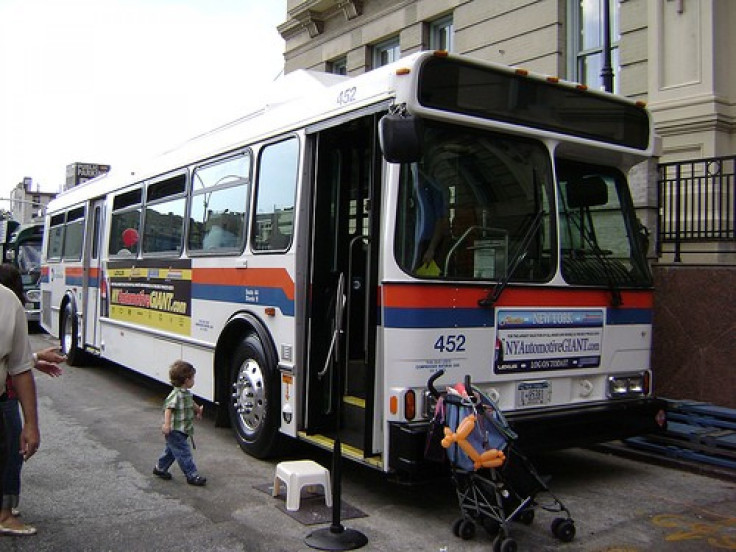Long Island Eye: Is This the Bus for Paris?
Analysis

Nassau County has a New Year's gift for 100,000 daily passengers on L.I. Bus: it's going French, having been sold to France's Veolia Environment SA, whose transportation unit operates many other U.S. systems.
Trouble is, the contract has not been signed, drivers are circulating petitions against it and the Republican-controlled Nassau County Legislature has not been able to hold a hearing on it yet. That's now on tap for Dec. 5.
Even there, approval is not assured. Lame-duck Legislator John Ciotti, a Republican, has said he will vote against it and Republican State Sen. Jack Martins has his doubts.
Nassau County Executive Ed Mangano, a Republican, decided to auction L.I. Bus a year ago when the Metropolitan Transportation Authority demanded an increase in the county subsidy for the bus service and he refused to pay it.
Albany found an $8 million bailout by June 30, which prevented cuts and a fare hike but Mangano adamantly didn't want to cough up another $24 million from his $2.5 billion budget at a time when Nassau is under scrutiny by the Nassau Interim Finance Authority (NIFA), which also has to OK the Veolia deal.
This being Nassau County, Republican politics have already played a part: former Sen. Alfonse D'Amato's lobbying firm advised Veolia; D'Amato's current wife gets a salary from the Town of Hempstead Zoning Board of Appeals and son-in-law Joseph Murphy was elected this month to State Supreme Court.
Veolia, which plans to rebrand the whole operation Nassau Inter-County Express (NICE) and paint the buses in Nassau orange, said it plans to retain most of L.I. Bus's employees, keep the fare the same as the MTA's $2.25 subway fare and offer free transfers for a year. It says it will keep most routes at least for six months. But the French company itself warned full-year net income will slump as much as the 13 percent drop for the first nine months.
Shares of Veolia have lost nearly 70 percent of their value this year, closing Friday at 8.37 Euros (US $11.14). Its Lombard, Ill.-based transportation division operates the airport SuperShuttles as well as parts of municipal transit in Baltimore, Boston, Phoenix, Toronto and other cities.
Right now, L.I. Bus's passenger mix represents all of Nassau's diversity. Besides carrying New York-bound commuters to Long Island Rail Road stations, its intra-county routes, linking Great Neck to Lynbrook or Glen Cove to Hempstead, provide the only public transit links, along with a free transfer, aside from taxis.
Ironically, all these systems were private until about 45 years ago, when Gov. Nelson Rockefeller, a Republican, created the MTA from the wreckage of the Penn Central, taking over the LIRR, Metro-North Railroad and many of the private bus lines.
Under first MTA czar William Ronan, the MTA was dubbed the Holy Ronan Empire. But the agency itself is not the same; new chairman Joe Lhota has been in office only since Nov. 14.
By contrast, Suffolk County Transit, which serves only 23,000 daily passengers, has run since 1980 with private companies under a county umbrella. But its fee is only $1.50 and the Suffolk County Legislature, which will remain controlled by the Democrats next year when new County Executive Steve Bellone, also a Democrat, comes in, needs to find $135 million for it.
Nobody proposes dispensing with Suffolk County Transit. The solution there is a likely fare hike, at least to $2.00.
Long Island, home of the original Levittown, still doesn't know how to pay for energy efficient and commuter-friendly buses.
© Copyright IBTimes 2024. All rights reserved.












